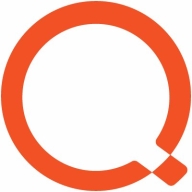


Quest KACE Systems Management Appliance and NinjaOne compete in the IT management category. According to user reviews, NinjaOne seems to have the upper hand due to its user-friendly interface and efficient deployment, particularly for smaller setups.
Features: Quest KACE Systems Management Appliance is noted for its mass package deployment, integration capabilities with Bomgar and ServiceNow, and comprehensive asset management. It excels in remote software deployment and efficient patch management. NinjaOne is valued for its scripting and automation tools, remote access capabilities, and seamless integration with third-party solutions like TeamViewer. Its user-friendly setup and robust monitoring features stand out.
Room for Improvement: For Quest KACE, users have pointed out scalability challenges, particularly when handling a large number of devices which can tax the system. Improvements are desired in patch management, license compliance, and a more intuitive reporting interface. NinjaOne users suggest enhancing its reporting capabilities for clearer outputs, addressing issues with ticketing systems and integrations, and improving pricing flexibility to meet larger enterprise needs.
Ease of Deployment and Customer Service: Quest KACE is primarily an on-premises solution that benefits from substantial technical support, with Premier Support receiving high praise for its responsiveness. Deployment involves tech support heavily, emphasizing careful planning. NinjaOne's cloud-based deployment is straightforward and appreciated for its setup ease in public and hybrid cloud environments. Its customer service is efficient, although there is room for better responses and enhanced cloud integration.
Pricing and ROI: Quest KACE offers reasonable pricing structured per device, making it cost-effective for larger organizations due to its comprehensive features. Organizations note a significant return on investment within one to two years, credited to improved IT productivity. NinjaOne provides competitive pricing attractive to small and medium-sized businesses, with discounts available for bulk licensing. Its subscription model is affordable, and users find value in the bundled tools like TeamViewer, observing a fair return on investment.
Everything we've gained from it makes my job easier day after day, and I see value in it as an engineer.
Importantly, when someone leaves the company, it helps protect document access on their devices.
Applications are deployed through Intune, and we see fewer tickets for common issues because we can resolve them through the solution.
NinjaOne enables significant time savings, reducing my workload by 40% to 50%, primarily due to remote management capabilities.
The return on investment is seen in the quick access to information, good inventory management, and efficient systems management.
When a support ticket is submitted, it directly reaches someone with Intune support expertise.
When I contacted Microsoft, they had the same expertise, if not more, which is phenomenal because I felt heard and my problem was solved.
Sometimes, the support provided is excellent, and the representative is knowledgeable, while other times, the service needs improvement.
Our experience with escalation supports, including auto escalation to third-level or engineering support, has been very positive.
The customer support at NinjaOne is excellent, rated ten out of ten.
I rate customer service and support for NinjaOne at seven out of ten due to slow response times.
The customer service is very good, providing quick customer support in Spanish.
The scalability of Microsoft Intune is ten out of ten.
Ideally, we want to automatically segregate devices based on user properties like primary use, but currently, dynamic groups seem limited to device properties.
It supports organizations with 200 endpoints and those with more than 15,000 endpoints.
I would rate the scalability of NinjaOne as ten out of ten.
The design suggests it is scalable.
The product is very scalable as it supports 10,000 thousand endpoints with just one appliance.
We have not experienced downtime, bugs, or glitches.
Microsoft Intune has been very stable.
A couple of years ago, the performance was not as good as it is now, but there are noticeable backend improvements.
I would rate the stability a ten out of ten.
Features like unlocking devices sometimes fail, and the support offered for other operating systems is insufficient.
There are communication issues, so you might start working with a feature without knowing if it will be deprecated six months from now.
Many third-party companies offer single-pane-of-glass reporting that shows you what your update environment looks like, how your patch is doing, application status, etc., but Intune's reporting is not intuitive.
Security and reporting, including business intelligence tools, are adequate.
The inclusion of XENServer and Proxmox as virtual platforms in NinjaOne is currently missing.
The network monitoring needs to be improved.
The user interface needs improvement as customers have mentioned they do not like the interface since it is not an SMA-based interface.
Introductory professional services, like a fast-track service, were included with our E5 membership, and there have been no additional costs.
The Intune suite and add-ons, such as batch management and remote help, are costly.
It costs approximately forty euros per user per month.
The pricing for NinjaOne is appropriate for small companies.
NinjaOne is reasonably priced, particularly with the inclusion of TeamViewer, SentinelOne, and Bitdefender.
The price or licensing of NinjaOne is a little bit high.
The pricing is in the middle range of the market, not too expensive but not the cheapest either.
Intune excels in configuration and compliance management for Windows 10, ensuring devices receive timely updates and adhere to organizational standards.
Dynamic groups allow us to set conditions for automatic membership, eliminating the need for user intervention or manual review and ensuring a seamless workflow.
Windows Autopatch is the most valuable because it removes the burden of patch management.
The software's automation tools have solved critical deployment problems for small businesses.
A significant feature of NinjaOne is its remote access capability, which is essential for my clients’ home office usage.
Every month, every quarter, I see new features, and it is always evolving.
The most valuable features include simplicity, which makes systems management easier and faster, especially for device management.



Microsoft Intune provides centralized management of mobile devices and applications, ensuring security, compliance, and productivity through integration with Microsoft services like Microsoft 365 and Azure Active Directory.
Organizations use Intune for managing mobile devices and applications, enhancing security and compliance across platforms. With features like single sign-on, conditional access, and zero-touch deployment via Autopilot, it facilitates efficient operations. Intune's scalability, easy enrollment, and capabilities such as remote wipe support diverse device management, offering robust data protection and efficient operation. Despite its features, improvement areas include reporting, compatibility with non-Microsoft devices, and better support for macOS and Linux devices.
What are the key features of Microsoft Intune?
What benefits should users look for in reviews?
In industries such as finance, healthcare, and education, Microsoft Intune is implemented to ensure secure and compliant device management. Companies leverage its capabilities to deploy security policies and manage both corporate-owned and BYOD environments, facilitating a unified approach to data protection and compliance.
NinjaOne automates the hardest parts of IT, delivering visibility, security, and control over all endpoints for more than 20,000 customers.The NinjaOne automated endpoint management platform is proven to increase productivity, reduce security risk, and lower costs for IT teams and managed service providers. The company seamlessly integrates with a wide range of IT and security technologies. NinjaOne is obsessed with customer success and provides free and unlimited onboarding, training, and support. - Learn more here: https://www.ninjaone.com/
Quest KACE Systems Management Appliance is a comprehensive tool for managing IT endpoints. It facilitates asset management, software distribution, and endpoint tracking while offering remote access capabilities and a centralized help desk.
Quest KACE Systems Management Appliance is designed for organizations that need efficient endpoint management. It offers a range of features like inventory tracking, automated patch management, and ticketing. By integrating with remote access tools such as Bomgar, Quest KACE helps reduce manual tasks involved in managing software updates and system deployments. Although it faces challenges in scalability and requires improvements in integration and reporting, it remains a versatile choice for asset tracking and endpoint administration.
What are Quest KACE SMA's key features?
What benefits should users consider?
Quest KACE Systems Management Appliance is implemented across industries for managing IT assets and endpoints, particularly where remote management and compliance are critical. It's employed in healthcare, education, and government sectors for efficient patch management, inventory control, and software deployment, aiding organizations in managing security accreditations and centralizing help desk operations.
We monitor all Remote Monitoring and Management (RMM) reviews to prevent fraudulent reviews and keep review quality high. We do not post reviews by company employees or direct competitors. We validate each review for authenticity via cross-reference with LinkedIn, and personal follow-up with the reviewer when necessary.